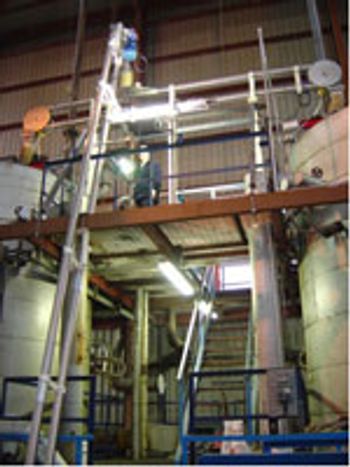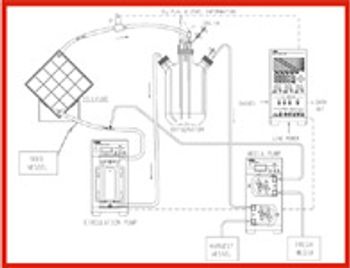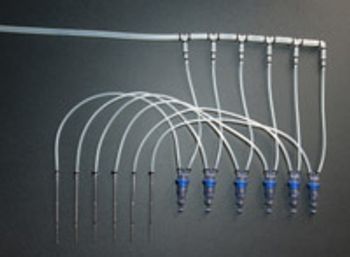
To choose the appropriate conveying system, a pharmaceutical manufacturer needs a thorough knowledge of the benefits and limitations of each conveyor type. The following overview compares several types of systems.

To choose the appropriate conveying system, a pharmaceutical manufacturer needs a thorough knowledge of the benefits and limitations of each conveyor type. The following overview compares several types of systems.

PharmTech's monthly newsletter, Equipment & Processing Report, reviews the Editor's Picks for the June 2008 edition: Esco Technologies and Hawk Measurement

Manufacturers have stopped seeing disposable containment as an ad hoc solution, and the technology increasingly incorporates thoughtful design and engineering. The future promises to bring more changes and new applications for disposable containment technology.

In an assessment report about medicinal products containing heparin, the European Medicines Agency (EMEA)'s Committee for Medicinal Products for Human Use (CHMP) said it could not draw firm conclusions about the level of risk associated with unfractionated heparins (UFH) contaminated with oversulfated chondroitin sulfate (OSCS). Nevertheless, CHMP recommended that contaminated lots be withdrawn completely.

Also, Shire voluntarily recalls ADHD patch Daytrana

The steering committee of the International Conference on Harmonization and its expert working groups adopted Quality Guideline Q10 "Quality Systems" last week at a meeting in Portland, Oregon.

Also, Pall plans expansion in South America, Anthony Clarke joins Alexza Pharmaceuticals, more...

The US Food and Drug Administration issued a new guidance Monday on indexing structured product labeling. The Center for Biologics Evaluation and Research and the Center for Drug Evaluation and Research will begin indexing structured product labeling in the product labeling for human drug and biologic products.

The transatlantic cooperation of the European Commission, the European Medicines Agency, and the US Food and Drug Administration was recognized at the Second Meeting of the Transatlantic Economic Council, held mid May in Brussels. The TEC is tasked with overseeing and accelerating government-to-government cooperation to advance economic integration between the United States and the European Union.

The California Senate passed SB 1096 on May 29, voting to amend the state?s Confidentiality of Medical Information Act to allow pharmacies to provide third parties with patient information for the purpose of mailing prescription refill reminders and drug information directly to patients.

The US Food and Drug Administration advised patients, caregivers, and healthcare professionals to switch to hydrofluoroalkane-propelled albuterol inhalers now because chlorofluorocarbon-propelled inhalers will not be available in the US after Dec. 31, 2008.

The Synthetic Organic Chemical Manufacturers Association is evaluating proposed legislation, The Climate Security Act of 2008 (S. 3036), which directs the Environmental Protection Agency to establish a program for decreasing greenhouse emissions.

As part of a larger effort to address drug counterfeiting, the European Commission is seeking to tighten manufacturing and related supply-chain requirements for active pharmaceutical ingredients.

Comparative-effectiveness analysis aims to promote appropriate pharmaceutical spending.

Customers complaining lead to some serious explaining.

Brief pharmaceutical news items for June 2008.

The author provides an overview of key regulatory issues facing companies seeking to market their biopharmaceutical agents globally.

Risk management, and its benefits for patients, plays a big role at the PDA Annual Meeting.

Creating a kinder, gentler manufacturing process that doesn't kill the product is the goal of process developers doing large-scale cell culture for cell therapy.

Editors' Picks of Pharmaceutical Science & Technology Innovations

New products for sterile filling, quality control, and anticounterfeiting measures gained notice.

Nanoparticle-based systems present many advantages for the delivery of current and emerging biological drugs.

With rising drug deveopment costs and burdensome clinical trials, Indian-based firms are transferring their research departments to other entities in hopes of saving cash, mitigating risk, and ultimately, buying back the rewards.

The authors focus on how single-use systems effectively control three potential sources of common contamination: cross contamination, microbial contamination and biologic contamination of the process facility.

Letting the public inside the drug development process may increase their faith in what we do.